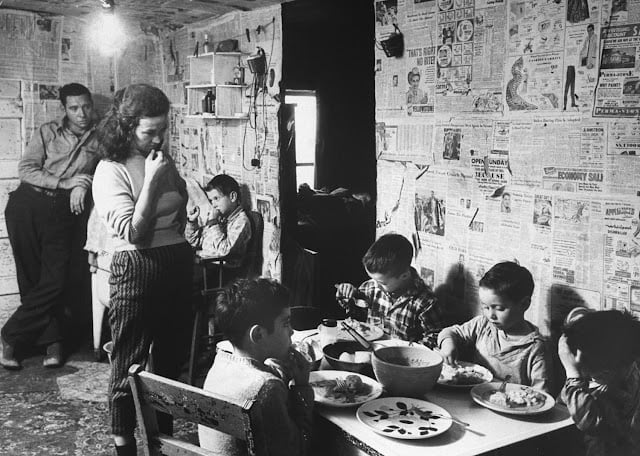this post was submitted on 18 Aug 2024
173 points (98.3% liked)
HistoryPorn
5435 readers
941 users here now
If you would like to become a mod in this community, kindly PM the mod.
Relive the Past in Jaw-Dropping Detail!
HistoryPorn is for photographs (or, if it can be found, film) of the past, recent or distant! Give us a little snapshot of history!
Rules
- Be respectful and inclusive.
- No harassment, hate speech, or trolling.
- Engage in constructive discussions.
- Share relevant content.
- Follow guidelines and moderators' instructions.
- Use appropriate language and tone.
- Report violations.
- Foster a continuous learning environment.
- No genocide or atrocity denialism.
Pictures of old artifacts and museum pieces should go to History Artifacts
Illustrations and paintings should go to History Drawings
Related Communities:
founded 2 years ago
MODERATORS
you are viewing a single comment's thread
view the rest of the comments
view the rest of the comments

Insulation and decoration. Getting anything else would have been an expense they couldn't afford - Appalachia was (and, for that matter, still is) one of the poorest regions of the USA.
A lot places didn't. My family comes from a rural location and there were places without telephone service in the 70s.
The house I grew up in didn't get running water until the 70s when my parents got it and put in a well.
I grew up in southern Appalachia, and the 90s my grandma would take me with her sometimes to check in on this elderly woman who lived alone in a house without running water. She had a well in her front yard and hauled all her water by hand. She lived into her 90s there taking care of herself. She did have electricity, but not AC.
Now for clarity this was EXTREMELY unusual which was why my grandma would check in on her a fair amount, along with other members of the community. But it’s definitely not that far in the past in some areas, for some families.
https://www.youtube.com/watch?v=JwIvn27PgsA
They say in Harlan country, there are no neutrals there. You'll either be a union man or a thug for J H Blair
Pardon the late reply, but what would the walls themselves be made of? They almost look like layered cardboard there. Or maybe sheet metal.
Cardboard as a kind of drywall was sometimes used under the papers, but wood for the structure itself.